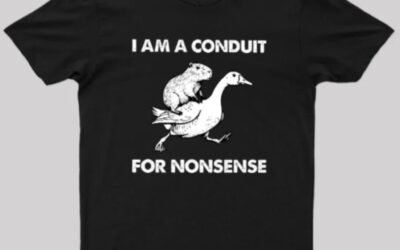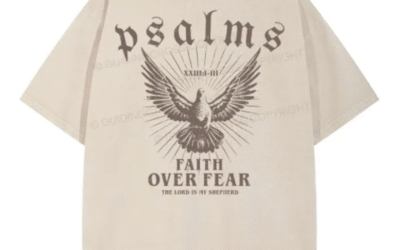Your Topics Multiple Stories: 10 Proven Ways to Improve Readability

Creating content that captures attention is already a tough job. Keeping your readers engaged is even harder. Whether you’re writing a blog, a school essay, or a product page, how your content looks and reads matters a lot. That’s where the magic of “your topics multiple stories” comes in. This approach focuses on dividing your main subject into smaller, clearer stories or ideas. The result? Readers stay longer, understand better, and feel more connected.
This article will explain how to use “your topics multiple stories” to improve your writing, especially for readers around a 9th-grade level. Plus, you’ll discover why clear structure, short sentences, fewer complex words, and strong transitions work wonders—not just for readers, but also for SEO.
Let’s dig into the first powerful tip.
Your Topics Multiple Stories: What It Means and Why It Works
“Your topics multiple stories” is a content method where a big subject is split into several smaller, easier-to-understand parts. Think of a long chapter book. Would you read it all if it had no chapters, breaks, or titles? Probably not. That’s how your readers feel when they see long, confusing blocks of text.
By breaking up your content into small “stories,” you help your readers:
-
Find the parts that matter most to them
-
Understand complex ideas in simple steps
-
Stay focused without getting overwhelmed
-
Feel like the writing speaks directly to them
This method is useful in blogs, website articles, school essays, and marketing content. It’s especially helpful when you need to keep things simple and to the point.
Break Big Ideas into Clear Sections
If you have a topic like “how to save money as a student,” break it into mini-stories:
-
Buying used textbooks
-
Cooking at home
-
Avoiding credit card debt
-
Finding student discounts
Each of these could be a short section. This way, your readers can jump to the story that interests them most.
Also, by using headers (like this one), your structure becomes easier to scan. Many readers today just skim articles before choosing to read them fully. So use this to your advantage.
Use Headers That Guide, Not Confuse
Headings and subheadings act like road signs. They show readers where they are and what’s coming next. For example, instead of writing:
Tips to Save
write something like:
How Cooking at Home Saves You Hundreds
It’s more specific and more helpful.
Using headers also boosts your SEO because search engines understand your content better.
Start Every Paragraph with a Key Idea
Readers lose interest quickly if they can’t understand your message fast. That’s why every paragraph should begin with your main idea. Then, add supporting details after that.
Like this:
Good Start: Eating out every day can cost students over $3,000 a year.
Bad Start: Many people do lots of things without noticing the cost.
The good example is clear. The reader gets the message right away.
Write Short, Simple Sentences
Long sentences are harder to read. If you use many of them, readers will zone out. Instead, keep most sentences under 20 words. This helps your writing feel light and breezy.
For example:
Too long: In order to afford your daily expenses without falling into debt, you must learn how to plan meals, buy in bulk, and cook at home regularly.
Better: Want to save money? Start by cooking at home. It’s cheaper and healthier.
See the difference? The short version is easier to read and understand.
Avoid Difficult Words When Possible
Not all readers have a huge vocabulary. Using big words might sound smart, but it can turn people off. Replace hard words with easier ones unless there’s no other option.
Here’s a quick guide:
| Difficult Word | Easier Word |
|---|---|
| Utilize | Use |
| Approximately | About |
| Commence | Start |
| Terminate | End |
If you must use a tricky word, try to explain it in a simple way.
Use Transition Words for Flow
Words like because, also, so, however, then, and for example guide readers through your text. They show the relationship between your ideas.
Try these categories:
| Purpose | Transition Words |
|---|---|
| Add information | also, and, in addition |
| Show contrast | but, however, on the other hand |
| Show cause/effect | because, so, therefore |
| Give examples | for example, such as |
| Summarize | in conclusion, to sum up |
Aim to use transition words in about 30% of your sentences.
Keep Paragraphs Under 6 Sentences
Big blocks of text scare readers away. Instead, write short paragraphs. A paragraph should only contain one idea. If you change ideas, start a new one.
Pro Tip: Use bullet points and numbered lists when giving steps or facts. They’re easier to read and follow.
Tell Stories Within Your Topics
People love stories. Even in an informative post, small stories can make a big impact. Here’s an example:
Instead of just saying:
“Students can save money by buying used books.”
Tell a quick story:
“Last semester, I spent $200 on new books. This time, I bought used ones online for $60. Same books, huge savings.”
Stories make your writing personal and more interesting.
Use Images to Break Up Text
A helpful image or illustration makes your content easier to digest. It also keeps readers engaged longer. Just make sure the image is relevant. Stock photos that don’t match the message can confuse or distract.
For example, if your article is about saving money at school, include an image of a student with books and a budget planner.
Format for Scanning
Your layout matters. People usually scan web pages before they decide to read. So, structure your content like this:
-
Use bold for key points
-
Break up big chunks into bullet points
-
Use subheadings every 300 words
-
Highlight important facts or quotes
Your Topics Multiple Stories Help with SEO Too
Yes, this method doesn’t just help readers—it also pleases search engines. When your content is structured with headings, short paragraphs, and clear flow, search engines understand it better. That means your page may rank higher.
Additionally, readers are more likely to stay longer and return later. Both are positive signals for SEO.
Don’t Forget to Edit and Review
Good writing is not just what you write—it’s also what you fix. Read your text aloud. Does it sound natural? Use tools like Hemingway or Grammarly to help you spot issues like long sentences, passive voice, or hard words.
Yoast SEO also has a great readability checker if you’re using WordPress.
Conclusion
Using “your topics multiple stories” to guide your writing is one of the smartest things you can do to make your content clearer and more reader-friendly. With simple tweaks—short sentences, clear headings, fewer difficult words, and strong transitions—you’ll create content that connects, informs, and converts.
Whether you’re writing for classmates, customers, or blog fans, these tips will keep your readers coming back for more.
FAQs
What does “your topics multiple stories” mean in writing?
It means breaking a big topic into several smaller, clearer ideas to help readers better understand the whole subject.
How many stories should I use under one topic?
As many as needed to cover your topic well. Usually 3 to 6 small “stories” work best.
Can this method be used in school essays?
Yes! It’s great for organizing your ideas clearly, which helps you get better grades.
Is it okay to use personal examples?
Absolutely. Short personal stories make your writing more relatable and engaging.
Do images help with readability?
Yes. Relevant images break up text, help explain ideas, and keep readers interested.
Will shorter sentences make my writing too simple?
No. They make your writing easier to understand without losing meaning.











